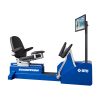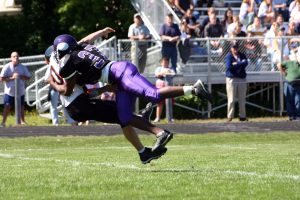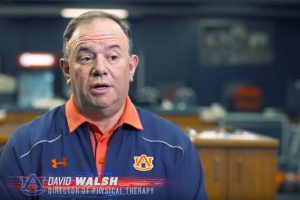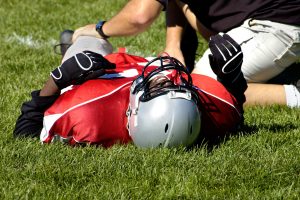
Concussion Management in Sports
Treatment GuidelinesEducation plays a significant role in the prevention and recognition of TBI. In cases where an Athletic Trainer or Physical Therapist are not available on site, it becomes the role of the referees and coaches to be the “first responder.”
Recently, we posted an article regarding helmet safety on the football field. A day does not go by in professional football news where you fail to hear about a player who is currently “in concussion protocol.” Much of this is the result of news in the past few years of a disease known as ‘CTE’ that has been found in the brains of deceased football players and other professional athletes. Chronic Traumatic Encephalopathy (CTE) has been found in those individuals that have been exposed to any repetitive trauma to the brain (1) and is not only specific to American football. As one ages, the disease progresses and may lead to cognitive impairments, memory loss, confusion, impaired judgement and dementia.
So, what? What are we to do in society to prevent concussions and ultimately, CTE? What are we to do on the football field, on the court, and on the battle field to minimize the risk of repetitive brain injury? There is no full proof solution to preventing every injury. However, the best answer lies in legislation, education, and proper management.
Since 2005, every state and the District of Columbia have enacted some form of legislation to address Traumatic Brain Injury or TBI for short (2). This legislation varies from state to state but is intended to: educate coaches, athletes and parents; require the removal of a student athlete if they are suspected of having a concussion; and require clearance from a licensed health care provider (3). States have different definitions of licensed practitioners and different forms of legislation. Please review the specific laws of your state to learn more about the requirements that your school system must follow (4).
Education plays a significant role in the prevention and recognition of TBI. In cases where an Athletic Trainer or Physical Therapist are not available on site, it becomes the role of the referees and coaches to be the “first responder.” It is up to them to recognize some of the common signs and symptoms of a concussion. It is also their responsibility to relay this information on to the parent or coach of the player. This can be accomplished by clearly establishing who is the ultimate decision maker in these cases when appropriate medical personnel are not available. There are many resources in each state and each district. Here is one such example of how ordinary citizens can become better educated on how to recognize and handle concussions.
In many cases, Certified Athletic Trainers (ATC’s) are the first providers present on the field/court. They are able to recognize potential hazards before they exist and they are also able to address the injury accordingly. In many cases, this early intervention prevents further injury or complications associated with Second Impact Syndrome. The National Athletic Trainers Association (NATA) has put together a position statement that can be an excellent resource for school districts looking to better improve their concussion management protocol (5).
What more can be done to prevent a concussion? The idea that neck strengthening to help reduce the risk is nothing new. The Multi-Cervical Unit helps target and strengthen weak areas in the neck. Ultimately, there is no way to fully prevent concussions in sports. Concussions even commonly occur in the home after all. If we want to keep our kids safe while letting them enjoy the many benefits of sport, we must become better informed and educated ourselves.
- https://concussionfoundation.org/CTE-resources/what-is-CTE
- http://www.ncsl.org/research/health/traumatic-brain-injury-legislation.aspx
- http://www.apta.org/StateIssues/Concussions/
- http://www.ucdenver.edu/academics/colleges/medicalschool/departments/pmr/documents/concussion_toolkit/laws/state.htm
- http://www.uofmhealth.org/conditions-treatments/brain-neurological-conditions/concussion/concussion-education





